#Wordless Wednesday – allow your photo(s) to tell the story.
-
Join 1,138 other subscribers
Linda Schaub
-
Linda Schaub
- Woolgathering at the water’s edge. #Wordless Wednesday #Reflections and long shadows
- Some days are diamonds, some days are stones.
- Someone told me it’s all happening at the zoo …. #Wordless Wednesday
- “It’s a beautiful day in this neighborhood” …
- Fellow Canuck kindred spirit. #Wordless Wednesday #National Walking Day!
-
Archives
FIFTY FAVORITE PARK PHOTOS
-

- Parker noshin’ nuts
-

- Fox Squirrel
-
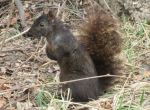
- Black Squirrel
-

- Parker, my Park cutie!
-

- Pekin Duck
-
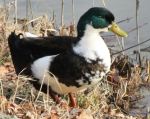
- Mallard Hybrid Duck
-

- Midnight munchin’ nuts
-

- Mute Swan
-

- Goslings
-

- Mama Robin
-

- Seagulls on ice floe
-

- Great Blue Heron
-

- Parker chowin’ down
-
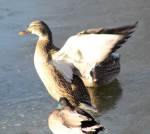
- Mallard Duck
-

- Northern Cardinal
-
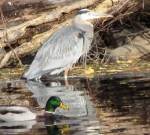
- Great Blue Heron (“Harry”) fishing for shad
-

- Parker: shameless begging
-

- Viceroy Butterfly
-

- Great Blue Heron
-

- American Goldfinch
-
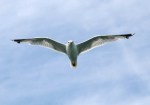
- Seagull
-

- Robin baby (not fledged yet)
-

- Mallard Ducks
-
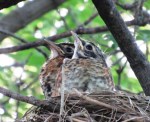
- Robins almost ready to fledge
-

- Parker angling for peanuts
-

- Robin fledgling
-
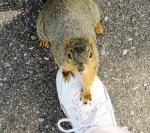
- Parker making a point that he wants peanuts
-

- Parker smells peanuts
-

- Parker with a peanut
-

- Red-Winged Blackbird
-

- Seagull
-

- Red-Bellied Woodpecker
-
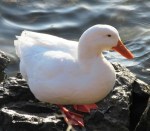
- Pekin Duck
-

- Starling
-

- Canada Geese family
-
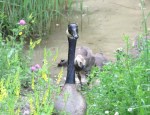
- Canada Goose and goslings
-

- Red-Winged Blackbird
-

- Parker says candy is dandy.
-

- Tiger Swallowtail Butterfly
-

- American Goldfinch
-

- Hunny Bunny
-

- Parker looking for peanuts
-

- The pier just past sunrise
-

- Mute Swan
-

- Parker in the snow
-

- Parker and a treat
-

- Great Blue Heron
-

- Me and my shadow (a/k/a Parker)
-

- Fox Squirrel
-
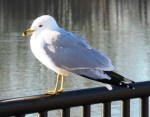
- Seagull
-

- Canada Goose
-

- Mallard Ducks
-

- Mute Swan
-
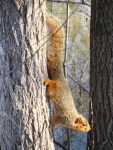
- Fox Squirrel – Parker
-

- Northern Cardinal
-
BADGES




















Wow Linda! Great pictures of the molting Mallards. Heard of it but never seen it myself. Will have to show the kids.
LikeLiked by 1 person
It is amazing to see them Esther, the males especially as that brown front and teal head get sparse and tell the kids that after both the males and females lose their feathers, they go into “eclipse phase” where they look alike, both brown and speckled until they get their final/regular plumage in.
LikeLike
It’s quite a process for the ducks in molting season. I didn’t know about this till recently and learned this is a vulnerable time for the ducks. They can’t fly so they’re helpless prey. Great pictures to show the molting looks.
LikeLiked by 1 person
Yes they are not only vulnerable but no energy as it takes a lot out of them – same for geese. Once they lose their large flight feathers, they take to the water and head to large shoreline parks where they can lose/regain their feathers and can paddle away from any predators and safety in numbers.
LikeLike
Yes, safety in numbers but it must still be a precarious time for them. Interesting to learn about their molting. This semester for science we are focusing on birds, and molting will be something covered in the near future. Right now, it’s the foundation, like what makes a bird a bird. Long way to go…
Have a great weekend and happy mid October. 🙂
LikeLiked by 1 person
I wish I’d known that Esther as last Saturday was Global Big Day – it is one of several “bird count days” around the world. I participated in it last Saturday as I was in the wildlife refuge for a 5k – I saw 68 birds altogether – you count species and list how many of each you saw. Tell the kids how birds are light and aerodynamic and their bones are hollow (see paragraph below) and for example, you see a Great Blue Heron which looks scrawny but all wings and it is only about 5 pounds body weight altogether. See about the bones which I Googled and found:
A human bone is dense and filled with bone marrow. However, a bird bone is hollow and filled with air. It also has some cross-sections of bone, called struts, that make the bone strong and help birds withstand taking off, flying and landing.
LikeLike
I used to see moulting mallards when I walked. They looked pitiful and bedraggled, just like yours.
LikeLiked by 1 person
Yes, I felt sorry for them, especially the males who have those beautiful teal heads that glint in the sun. Then they all turn a speckled brown – both males and females, until their final plumage grows in.
LikeLiked by 1 person
Yes, bedraggled! (Like my blue jay a couple of months ago!) They look like real troopers, though! 🙂
LikeLiked by 1 person
Your blue jay probably has his feathers grown in by now and sassy now that he is looking good again. I felt so sorry for them Barbara. The female didn’t look too bedraggled, but the males, especially around the eye and chest area was so bare!
LikeLiked by 1 person
All beautiful!
LikeLiked by 1 person
The equivalent of a bad hair day!
LikeLiked by 1 person
Move over Squirrel Lady,Duck Lady is in the House!
I’m sure they are embarrassed to be caught half dressed Linda.
LikeLiked by 1 person
Ha ha – yes, I was lucky (or maybe I should say ducky) on this trip to Heritage Park. I agree with you Wayne, especially the drakes with their vibrant teal heads and beautiful plumage. I felt badly for them.
LikeLiked by 1 person
Such pretty colors! Each one is different.
LikeLiked by 1 person
Yes they were – poor things; as they walked along, feathers were flying around. I have some pictures of Canada Geese I took this Summer – same thing, molting up a storm and feathers were gathering in the grass as they plucked them out.
LikeLiked by 1 person
I do wonder if they feel sort of naked while they’re molting.
LikeLiked by 1 person
Yes, they drop so many feathers at one time … good thing this happens in the Summer, when it’s warm.
LikeLiked by 1 person
Molting Mallards… sounds like the beginning of a new poem.☺
LikeLiked by 1 person
It does have a rather poetic ring to it, doesn’t it? 🙂
LikeLike
They always look so ruff this time of year 🙂
LikeLiked by 1 person
Yes, I feel sorry for them Sandra.
LikeLike
It seems strange they should be molting this time of year, when you’d think they would need the extra layer of protection for the upcoming colder weather? How long does molting go on and when do they get their new fall outfits?
LikeLiked by 1 person
PS. I did not see any molted ones from the bunch I took pics of but that was several weeks ago?
LikeLiked by 1 person
That was why … they have their regular plumage back once again. The eclipse phase (all brown feathers after molting) is usually in August, and then they begin growing in their regular feathers again. You have to go looking for them in July or August next year (we’ll probably have a lot of rain again, so look in the parking lot).
LikeLiked by 1 person
Actually this picture was taken in the Summer, in early July, the same day I took the photos of the ducks swimming around in that makeshift pond that will be in Monday’s post. The ducks and geese usually molt in June. At Council Point Park, once the geese start losing their large flight feathers, their goslings may not be able to fly yet as their wings are not grown yet, but they all paddle over to a big shoreline park as the geese can’t fly until the new flight feathers grow back and could be attacked by predators – they are safe in the water. The geese are gone all Summer from Council Point Park. As to the Mallards, their feathers grow back speckled brown (both male and female) and you cannot tell male from female – this is when they are in “eclipse phase”, then a month or so later they get their regular plumage in. I took a couple of interpretive cruises at the Metropark and one was in August and we passed a lot of ducks out on the water that all looked the exact same so the guide explained it to us. I would think they’d have their fall outfits by September.
LikeLiked by 1 person
That makes sense, to molt in the hot weather. I thought the photos were recent, forgot you had such a backlog of pictures and stories!
LikeLiked by 1 person
At the rate I’m going, I’ll have enough pictures and stories into the new year! I am planning to do the Henry and Clara Ford Estate in January … I have lilac pics from Spring 2021, the rose garden from July 2021 and I scrapped all the photos I got from the 2019 afternoon spent there because all of the photos of the home and the potting shed were undergoing renovation, so there was scaffolding all around the home (which looks a little like a castle). So that will be three, maybe four posts over two weeks. Then I may go back when the renovation (and COVID) are a done deal.
LikeLiked by 1 person
We will all be wanting to look at Lilacs in a few months when it snows!
LikeLiked by 1 person
That’s what I thought too Joni. Something colorful to perk up our spirits once the snow flies!
LikeLiked by 1 person
Miss Linda……………awesome close ups of the Mallards………………I love learning about our area ducks……..thank you
LikeLiked by 1 person
Glad you liked them Ann Marie – by now I am sure they are back to their vibrant plumage!
LikeLike
Like how you creatively led us to the individual feathers and then the cluster of them – so cool
LikeLiked by 1 person
Thank you Yvette. I wanted to show people what those poor ducks are lamenting over!
LikeLiked by 1 person
😊
LikeLiked by 1 person
They look so rough – I just feel sorry for them. Our chickens are molting now and I can’t even bring myself to take pictures of them. LOL! The coop looks like there was a massacre with feathers everywhere.
LikeLiked by 1 person
I believe it – especially if they all molted at one time. When I had my white canary, I’d clean him and a few minutes after that, he’d hop from perch to perch and feathers were floating around the cage again, landing in the water and food. That’s late in the year for your chickens to molt – they’ll need sweaters. Have you ever seen those sweaters they made for chickens? You could crochet them some. Here’s a pattern but they don’t show a picture:
LikeLiked by 1 person
My Aunt just sent me a pattern for chicken sweaters as well. It gives dressing a chicken a whole new meaning. LOL!
LikeLiked by 1 person
Ha ha – great minds think alike. Make them up over the Winter and that will be a fun post in 2022, not to mention a warm covering for your feather babies. 🙂
LikeLiked by 1 person
Such a handsome-looking Mallard. He appeared to be happy to pose for you!
LikeLiked by 1 person
The nice pose was likely because I kept cooing “poor baby” to him to build his confidence back up. 🙂
LikeLiked by 1 person
Aw, you’re so sweet!
LikeLiked by 1 person